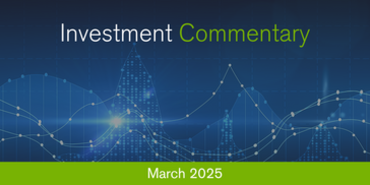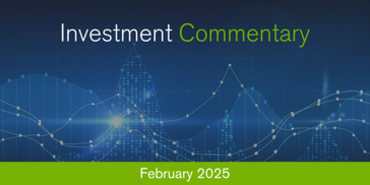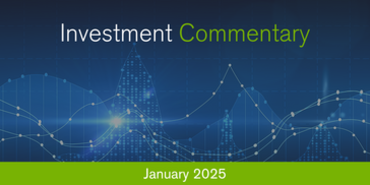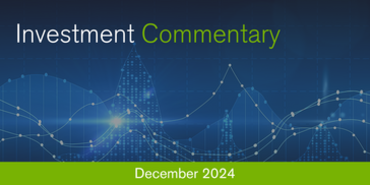Market Commentary Q3 2024

Q3 was a strong period for most asset classes, despite markets enduring several bouts of volatility during it. Market-moving events of the quarter included increasing US recession fears, a large unwind of the Yen carry trade, fears over stretched valuations, especially in technology stocks, and a further escalation of hostilities in the Middle East. However, these proved to be brief setbacks for markets as positive drivers were prevalent during the latter part of the quarter, with various equity indices ending the quarter at record highs as a result. These included the commencement of the US Federal Reserve’s rate cutting cycle, with a 50-basis point reduction. Towards the end of the period, the Chinese Government announced comprehensive stimulus measures to aid their stuttering economy, with Chinese equities soaring in the subsequent short squeeze.
In addition to the Fed’s interest rate cut, there were also cuts from the European Central Bank and the Bank of England during the quarter. With inflation continuing to trend downwards towards central bank targets, there was further repricing of expectations for future interest rates. As a result, fixed income markets continued to perform well, with Government bonds and credit delivering solid returns. Global aggregate bond indices returned circa +7% in Q3, with Government bonds not far behind. US Treasuries returned +4.9%, Eurozone government bonds +4.1% and Gilts +2.5%. Within credit, US markets produced the best returns, with investment grade up +5.7% and high yield up +5.4%.
Global equity markets were up during the period, with the more interest rate sensitive stocks the best performers. Global REITs returned +16.8% and global small caps were up up +9.5%. Developed markets also enjoyed strong returns, with a +6.5% gain over the quarter. Within this cohort, it was a case of strong US returns (+5.9%) and mediocre returns from the UK and Eurozone (+1.8% and +2.5% respectively). Global growth stocks were in positive territory (+3.5%) but gave up some of their year-to-date outperformance as further rotation away from technology stocks occurred. China’s stimulus measure, announced at the end of the quarter, helped to propel Asia Ex-Japan to one of the top performing regions, with a return of +10.6%. The Hang Seng recorded its strongest quarterly performance since 2009, with a return of +21.7%. A significant outlier was Japan, with a third consecutive monthly decline in September, taking the Q3 return to -3.6% for the Nikkei. A combination of a stronger Yen, political change, and re-positioning into rallying Chinese equities were the main drivers.
These positive quarterly returns did help to mask periods of turbulence, however. Early August was tumultuous, triggered by a weak US jobs report, leading to fears of an economic slowdown in the US. A subsequent narrowing of interest rate expectations between the US and an increasingly hawkish Bank of Japan, resulted in a significant unwind of Yen carry trades (borrowing in Yen to invest in higher-yielding currencies). Knock-on effects from this were evident in other markets, such as a whopping single-day fall of -12% for Japan’s TOPIX index. This spread to other markets, with volatility spiking to levels last seen since the early days of the Covid-19 market turmoil. However, as the period progressed, equity markets bounced back, buoyed by more robust US data, a dovish sounding Federal Reserve and a degree of capitulation from the Bank of Japan, which toned down its previously hawkish rhetoric. By the end of Q3 the soft-landing narrative prevailed once more, and equity markets finished the quarter strongly.
For commodities, it was a flat period at the aggregate level. However, once more, there was considerable underlying volatility, with oil prices down considerably. Brent crude fell by -16.9% in Q3 to its lowest monthly closing level since Q1 2021. Gold had another standout quarter, returning +13.2% on the back of interest rate cutting tailwinds. Industrial metals also enjoyed a strong quarter, with copper bouncing back strongly on the Chinese stimulus measures to end the quarter +3.9% up.
It was a volatile period for currency markets during the quarter. With the Federal Reserve going for a 50-basis point cut instead of 25, the US dollar was weak across the board, with the Dollar index returning -4.8% (it was weaker versus every other G10 currency). With the Bank of Japan hiking interest rates, the Yen had a strong quarter, rising +12% versus the dollar and +7.8% versus the Euro. Sterling was slightly stronger versus the Euro (+1.8%).
- Date
- 30/09/2024





